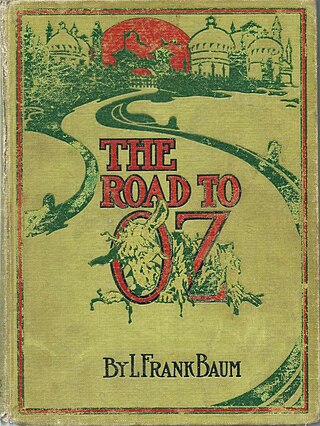
The Road to Oz is the fifth book in L. Frank Baum's Oz series. It was originally published on July 10, 1909 and documents the adventures of Dorothy Gale's fourth visit to the Land of Oz.

Ozma of Oz, published on July 30, 1907, was the third book of L. Frank Baum's Oz series. It was the first in which Baum was clearly intending a series of Oz books.

Tik-Tok of Oz is the eighth book in the Oz series written by L. Frank Baum, published on June 19, 1914. The book has little to do with Tik-Tok and is primarily the quest of the Shaggy Man to rescue his brother, and his resulting conflict with the Nome King. The book was based on Baum's play The Tik-Tok Man of Oz, which was produced in Los Angeles in spring 1913.

Princess Ozma is a fictional character from the Land of Oz, created by American author L. Frank Baum. She appears for the first time in the second Oz book, The Marvelous Land of Oz (1904), and in every Oz book thereafter.

The Land of Oz is a magical country introduced in the 1900 children's novel The Wonderful Wizard of Oz written by L. Frank Baum and illustrated by W. W. Denslow.
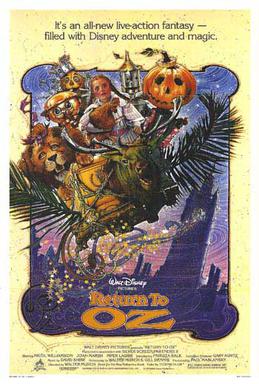
Return to Oz is a 1985 dark fantasy film released by Walt Disney Pictures, co-written and directed by Walter Murch. It stars Nicol Williamson, Jean Marsh, Piper Laurie, and Fairuza Balk as Dorothy Gale in her first screen role. The film is an unofficial sequel to the 1939 Metro-Goldwyn-Mayer film The Wizard of Oz, and it is based on L. Frank Baum's early 20th century Oz novels, mainly Ozma of Oz (1907). In the plot, an insomniac Dorothy returns to the Land of Oz to find it has been conquered by the wicked Nome King and his accomplice Princess Mombi. Dorothy must restore Oz with her new friends Billina, Tik-Tok, Jack Pumpkinhead, and the Gump.

The Deadly Desert is the magical desert in Nonestica that completely surrounds the fictional Land of Oz, which cuts it off from the rest of the world.

Tik-Tok is a fictional "mechanical man" from the Oz books by American author L. Frank Baum. He has been termed "the prototype robot", and is widely considered to be one of the first robots to appear in modern literature, though the term "Robot" was not used until the 1920s, in the play R.U.R.

The Nome King is a fictional character created by American author L. Frank Baum. He is introduced in Baum's third Oz book Ozma of Oz (1907). He also appears in many of the continuing sequel Oz novels also written by Baum. Although the character of the Wicked Witch of the West is the most notable and famous Oz villain, it is actually the Nome King who is the most frequent antagonist throughout the entire book series.
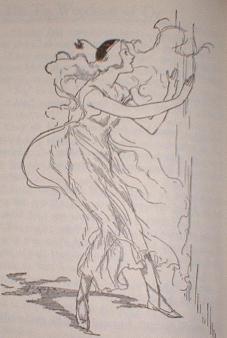
Polychrome is a cloud fairy and the youngest daughter of the Rainbow, thus she is a "sky princess". She first appears in The Road to Oz (1909), which is the fifth book of the original fourteen Oz books by American author by L. Frank Baum. She also appears several times in later Oz stories of the classic series, and has a title role in the modern sequel Polychrome: A Romantic Fantasy by Ryk E. Spoor.
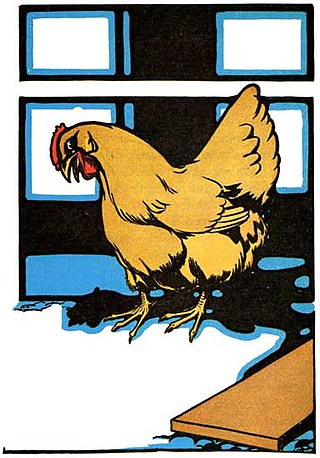
Billina is a fictional character in the classic children's series of Oz books by American author L. Frank Baum. She is introduced in Ozma of Oz (1907).
The Shaggy Man is a character in the Oz books by L. Frank Baum. He first appeared in the book The Road to Oz in 1909.

The Magical Mimics in Oz (1946) is the thirty-seventh in the series of Oz books created by L. Frank Baum and his successors, and the first written by Jack Snow. It was illustrated by Frank G. Kramer. The book entered the Public Domain in the United States, when its copyright was not renewed as required.
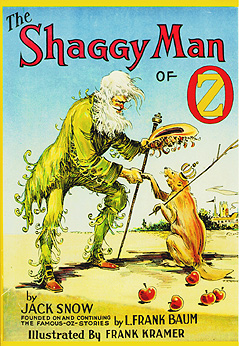
The Shaggy Man of Oz (1949) is the thirty-eighth in the series of Oz books created by L. Frank Baum and his successors, and the second and last by Jack Snow. It was illustrated by Frank G. Kramer. The book entered the public domain in the United States when its copyright was not renewed as required.

The Wonderful Wizard of Oz, known in Japan as Ozu no Mahōtsukai (オズの魔法使い), is a Japanese anime television series adaptation based on four of the original early 20th century Oz books by L. Frank Baum. In Japan, the series aired on TV Tokyo from 1986 to 1987. It consists of 52 episodes, which explain other parts of the Oz stories, including the events that happened after Dorothy returned home.

The Land of Ev is a fictional country in the Oz books of L. Frank Baum and his successors. The country was first visited in Baum's third Oz novel, 1907's Ozma of Oz, and was the first of Baum's countries that surround the Land of Oz. This book introduced the Nome King, a recurring villain who lives underground beneath the Land of Ev.

Paradox in Oz is a 1999 novel written by Edward Einhorn. The book is an entry in the series of books about the Land of Oz written by L. Frank Baum and a host of successors.

Emerald City Confidential is a 2009 computer adventure game conceived by Dave Gilbert, developed by Wadjet Eye Games, and published through PlayFirst. It follows the protagonist Petra, Emerald City's only private eye, as she is approached by a strange woman named Dee Gale. Dee's fiancé is missing, and she is willing to pay Petra above the going rate in order to find him. Lacking any other prospects, Petra agrees. What starts off as a simple missing person case soon takes Petra deep into the seedy underbelly of the Emerald City's criminal underground and beyond. She encounters many characters from the Oz canon and some new characters, learns several magic spells, and uncovers the answer to a dark secret that has haunted Petra all her life.

The Tik-Tok Man of Oz is a musical play with book and lyrics by L. Frank Baum and music by Louis F. Gottschalk that opened at the Majestic Theatre in Los Angeles, California on March 31, 1913. It is loosely inspired by Baum's book Ozma of Oz (1907), incorporates much of the material from Baum's book The Road to Oz (1909), and was the basis for his 1914 novel, Tik-Tok of Oz. It was promoted as "A Companion Play to The Wizard of Oz" and directed by Frank M. Stammers. The play is known from its advertising and published music, but survives only in earlier manuscript.
















